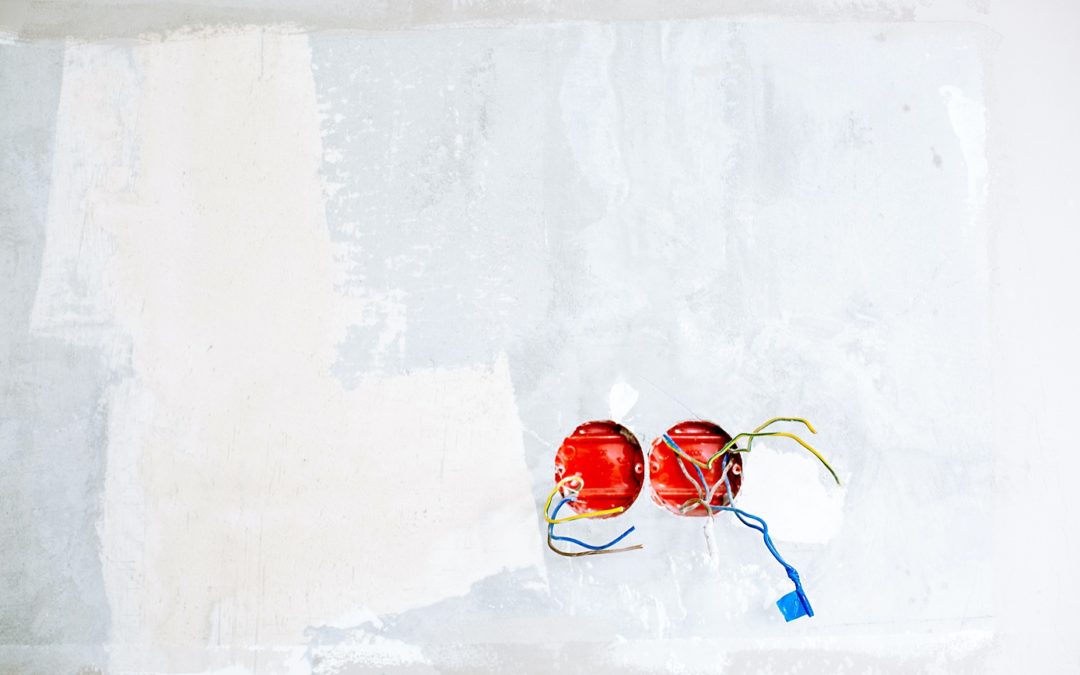If your older home was built with aluminum wiring for its electrical system, it’s no secret that it should be replaced. Although aluminum wiring was once considered a safe and inexpensive alternative to copper wiring, about a decade after this discovery it was found to be a genuine hazard. As such, homes built from around 1965 to 1975 are the most likely to have this issue. According to the Canadian Standards Association, homes manufactured with aluminum wiring before 1972 are 55 times more likely to have critical fire hazard connections compared to homes manufactured with copper.
Aluminum wiring is practically guaranteed to become defunct as time passes – it corrodes, turning rusty. It also expands and contracts with temperature changes much more than copper. It even has a higher electrical resistance than copper and is also less ductile. And it is a soft metal: eventually, aluminum wires may begin to change shape as screws or other components apply pressure to them. This can lead to gaps in the wiring, which in turn leads to arcing – the phenomenon of electricity jumping from one connection to another. Arcing can very easily cause a fire.
How to Identify Aluminum Wiring
If you are concerned but unsure whether your home is run with aluminum wiring, don’t worry. This is an easy problem to solve if you look in the right places. Check areas around your home where the wires could be exposed, such as in the basement or attic, at the electrical panel, or even between open floor joists.
You’ll usually be able to identify what type of wiring you’re dealing with by reading markings on its protective outer layer. If the wiring is aluminum and was manufactured prior to May of 1977, it will be labelled differently than wiring made after that date, stating ALUMINUM or an abbreviation of such in the form of ALUM or AL. If it was manufactured later, the label or abbreviation will have the letters ACM as well – look for ALUMINUM ACM, ALUM ACM, or ALACM.
How to Identify an Immediate Issue
If you have found that your home does run on aluminum wiring and you are concerned about safety, be aware of the following indications that there might be a problem. You should contact a repair electrician immediately if you notice any of the following:
- Lights flickering
- Strange odours, particularly an off smell of fish or burning
- Unexplained static on the TV or radio
- Warm outlets or faceplates
Safety is Priceless
Now that you have identified aluminum wiring in your older home, what will it take to replace such? Depending on the size of your house and the scope of the job, replacing all aluminum wiring could cost anywhere from $8,000 to $15,000.
Although the cost of materials for this job is relatively inexpensive, the labour required is another story. Rewiring a home is a complicated process. The cost will also depend on things like how old your home is, how accessible the wiring is to replace, and how difficult it is for the electrical repair company to reach all the different places the wire runs through.
Replace or Repair?
If you choose to simply repair the aluminum wiring in your home instead of replacing it altogether, this is still an expensive task but not quite as costly as a total replacement. Keep in mind that this is not likely to be a permanent fix, and does not guarantee the removal of aluminum wire fire hazards. The best way to remove this risk is to remove the aluminum wiring, as it is the hazard in question.
However, if you would rather repair than replace it, there are a few different options. These include common fixes such as AlumiConn connectors, which allow you to pigtail wiring with greater ease. They can be used for aluminum to copper and aluminum to aluminum connections.
You could also use the COPALUM method – this repair involves attaching a piece of copper wire to the existing aluminum branch circuit with a specialty metal sleeve and powered crimping tool. You must use the matching AMP tool to complete this installation. Richard with VIP Realty says, to keep in mind that this is not likely to be a permanent fix, and does not guarantee the removal of aluminum wire fire hazards.
Insurance Matters
Whether you choose to replace or repair the aluminum wiring in your home, consider that it will affect your home insurance. Insurance companies may charge more to keep your home covered if you have aluminum wiring, or they might not give you a policy at all. If they do, they could require specific certifications to prove your home is safe.
Replacing your home’s aluminum wiring is a costly but beneficial investment. You are also increasing your home’s value exponentially by choosing to remove this fire hazard – replacing the aluminum wiring in a home is sure to give potential buyers peace of mind.

Recent Comments